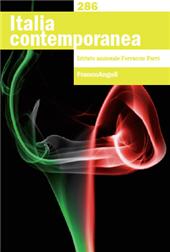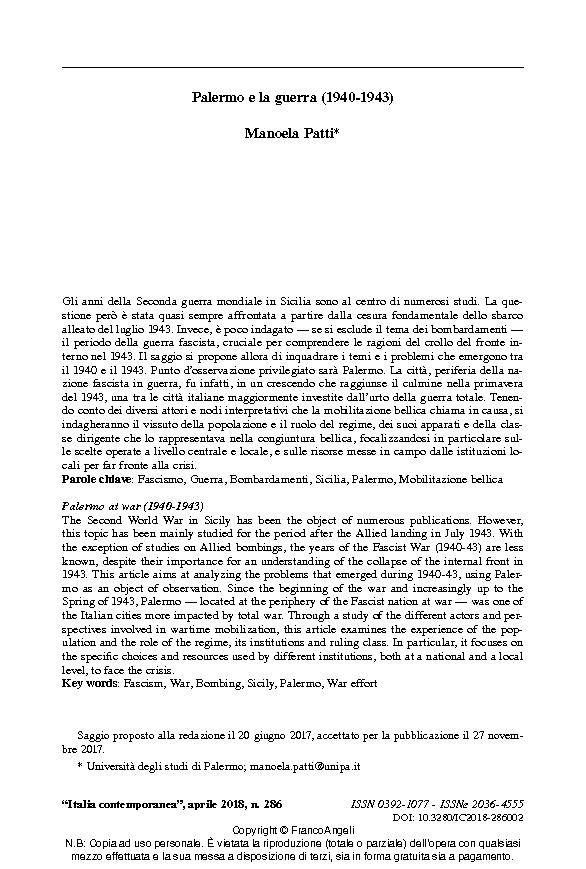Palermo e la guerra (1940-1943)
34-59 p.
Gli anni della Seconda guerra mondiale in Sicilia sono al centro di numerosi studi. La questione però è stata quasi sempre affrontata a partire dalla cesura fondamentale dello sbarco alleato del luglio 1943. Invece, è poco indagato - se si esclude il tema dei bombardamenti - il periodo della guerra fascista, cruciale per comprendere le ragioni del crollo del fronte interno nel 1943. Il saggio si propone allora di inquadrare i temi e i problemi che emergono tra il 1940 e il 1943. Punto d'osservazione privilegiato sarà Palermo. La città, periferia della nazione fascista in guerra, fu infatti, in un crescendo che raggiunse il culmine nella primavera del 1943, una tra le città italiane maggiormente investite dall'urto della guerra totale. Tenendo conto dei diversi attori e nodi interpretativi che la mobilitazione bellica chiama in causa, si indagheranno il vissuto della popolazione e il ruolo del regime, dei suoi apparati e della classe dirigente che lo rappresentava nella congiuntura bellica,
focalizzandosi in particolare sulle scelte operate a livello centrale e locale, e sulle risorse messe in campo dalle istituzioni locali per far fronte alla crisi. [Testo dell'editore].
The Second World War in Sicily has been the object of numerous publications. However, this topic has been mainly studied for the period after the Allied landing in July 1943. With the exception of studies on Allied bombings, the years of the Fascist War (1940-43) are less known, despite their importance for an understanding of the collapse of the internal front in 1943. This article aims at analyzing the problems that emerged during 1940-43, using Palermo as an object of observation. Since the beginning of the war and increasingly up to the Spring of 1943, Palermo - located at the periphery of the Fascist nation at war - was one of the Italian cities more impacted by total war. Through a study of the different actors and perspectives involved in wartime mobilization, this article examines the experience of the population and the role of the regime, its institutions and ruling class.
In particular, it focuses on the specific choices and resources used by different institutions, both at a national and a local level, to face the crisis. [Publishers' text].
Is part of
Italia contemporanea : 286, 1, 2018-
Articles from the same issue (available individually)
-
Information
ISSN: 2036-4555
KEYWORDS
- Fascismo, Guerra, Bombardamenti, Sicilia, Palermo, Mobilitazione bellica
- Fascism, War, Bombing, Sicily, Palermo, War effort



